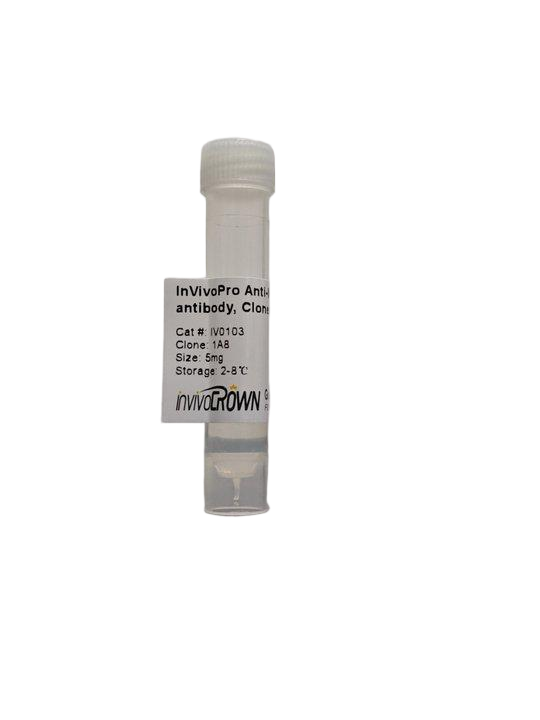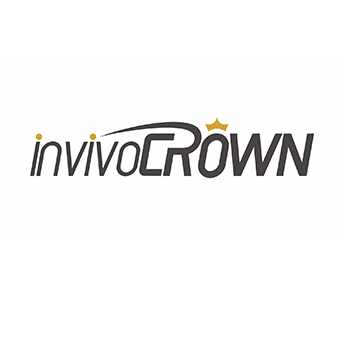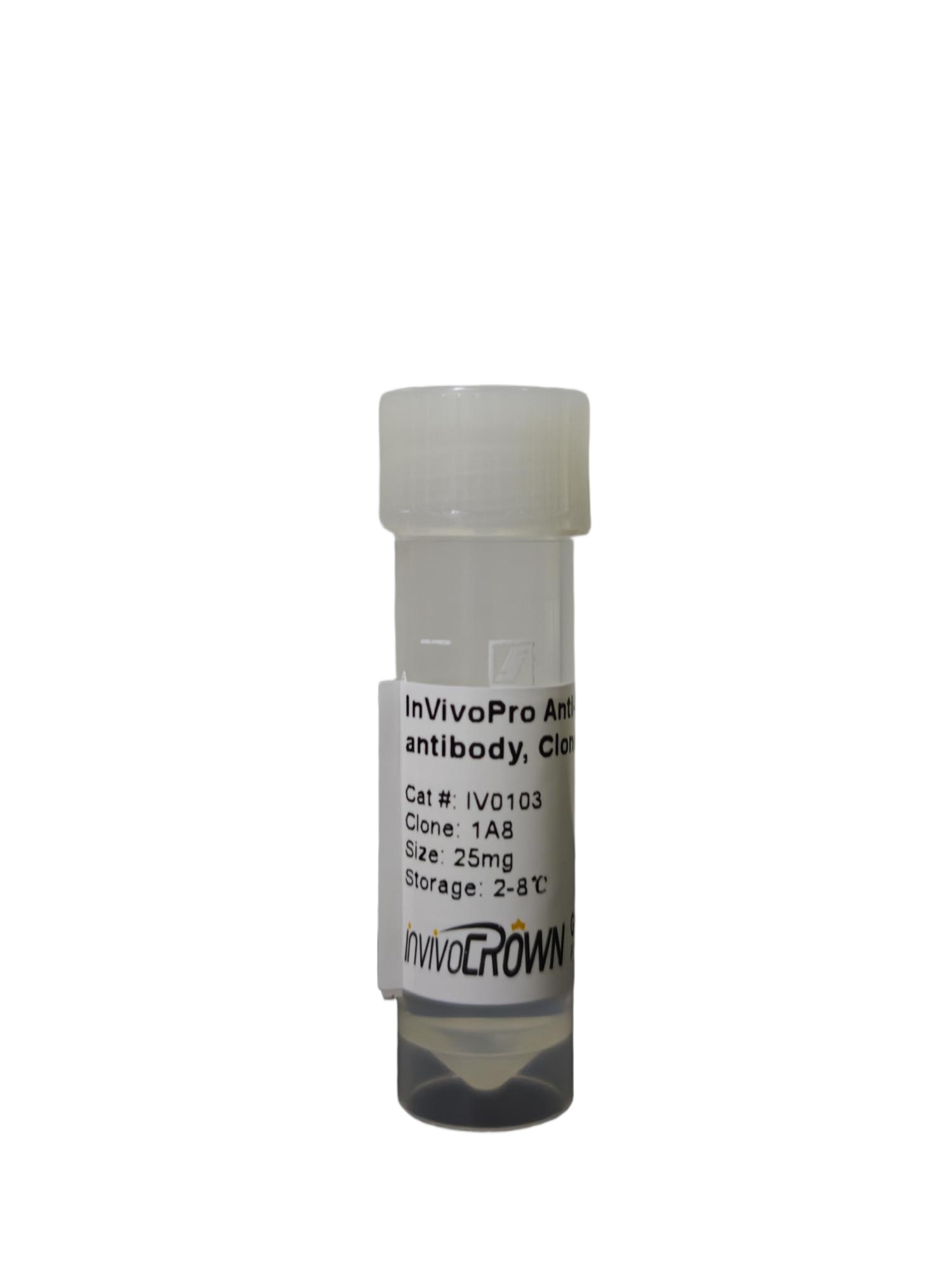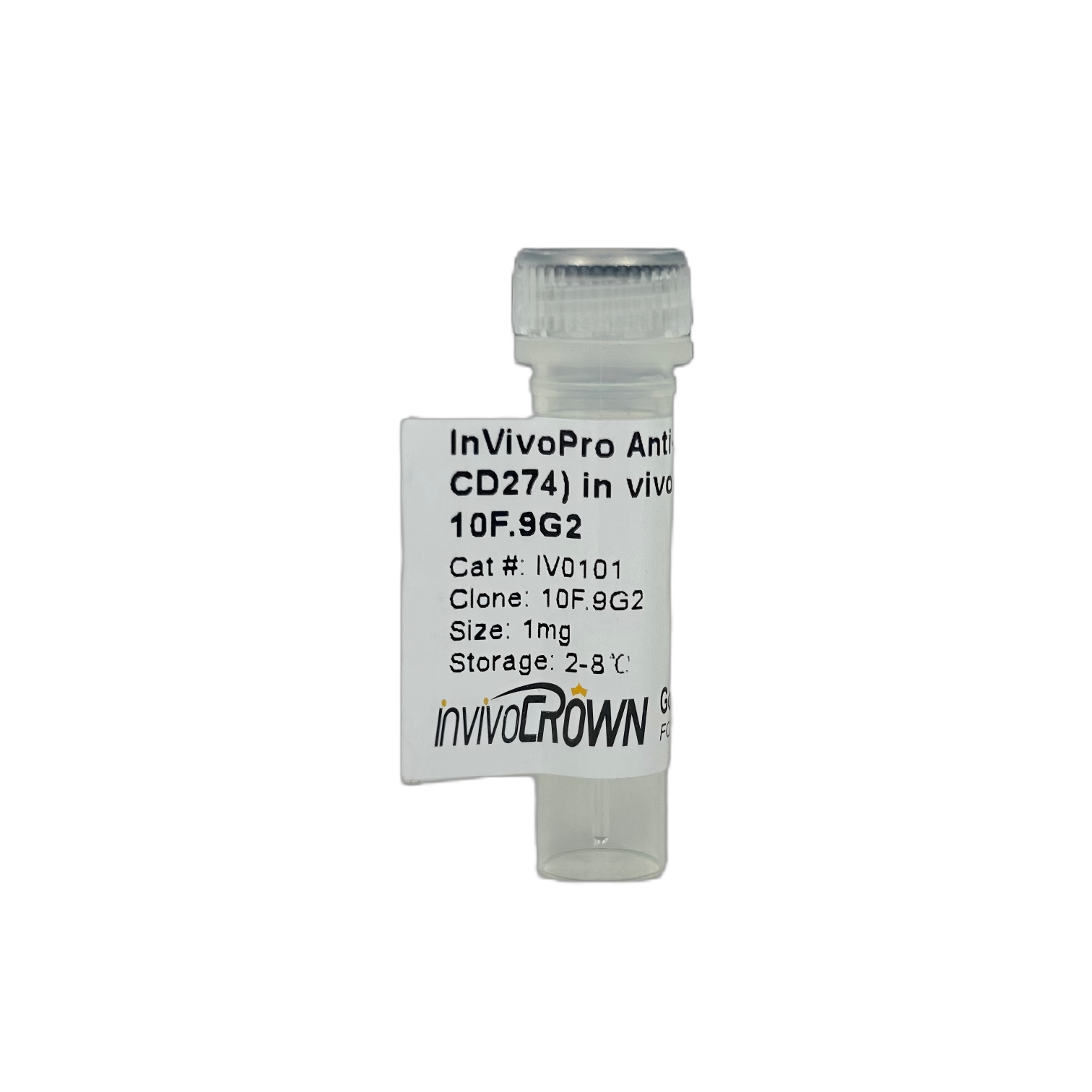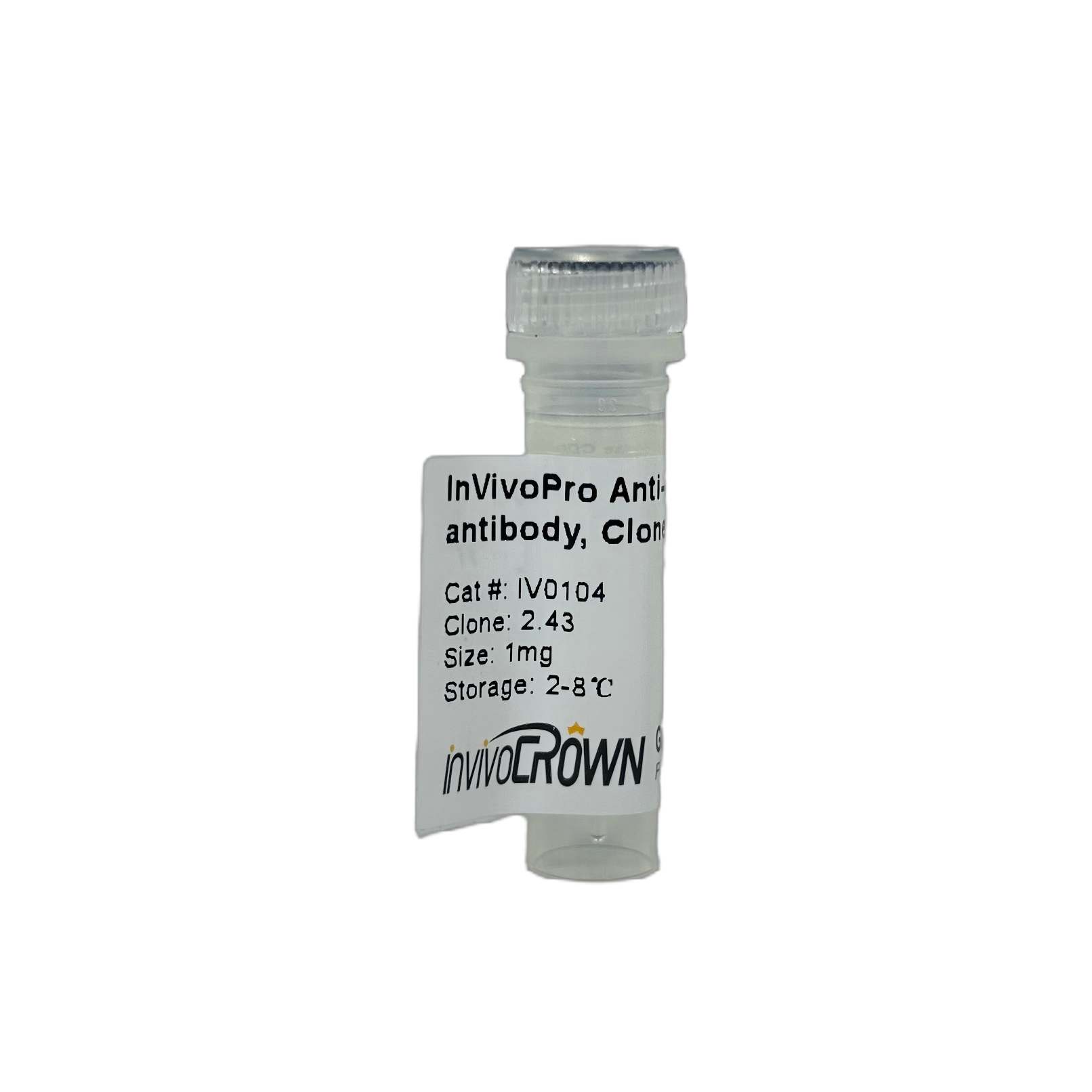| Catalog |
IV0103 |
| Product Name |
InVivoPro Anti-Mouse Ly6G in vivo antibody, Clone 1A8 |
| Size |
1mg/5mg/25mg/50mg/100mg |
| Isotype |
Rat IgG2a κ |
| Clone |
1A8 |
| Target |
Ly6G |
| Other Names |
Gr1,Gr-1,Ly-6G |
| Isotype Control Catalog Code |
IV0105 or Rat IgG2a Isotype Control |
| Dilution Buffer |
PBS, pH 7.2, contains no stabilizers or preservatives |
| Reactivity |
Mouse |
| Host Species |
Rat |
| How much antibody to use in vivo |
100-500 μg per mouse; or 5 mg/kg. This range is based off the most recent publication data using the 1A8 clone in vivo. Each investigator should determine their own optimal working dilution for specific applications. |
| Background |
Ly-6G is a 21-25 kD GPI-anchored protein, is expressed on the majority of myeloid cells in bone marrow and peripheral granulocytes.Ly6G antibody (clone 1A8) recognizes an epitope on mouse Ly6G. Clone 1A8 does not cross react with Ly6C. |
| Applications |
In vivo neutrophil depletion, in vivo MDSC depletion, Flow cytometry, Immunohistochemistry(Paraffin and Frozen) |
| Purification |
protein A or G |
| Storage |
This antibody is stable for at least 2 months when stored at 2-8°C. For long term storage, aliquot in working volumes without diluting and store at -20°C or -80°C. Avoid repeated freeze thaw cycles. |
| Shipping |
2-8°C with blue ice |
| Concentration |
Lot specific, generally ≥ 5.0 mg/ml |
| Shelf Life |
12 months from the date of receipt if stored as recommended |
| Formulation |
PBS Buffer, PH 7.2, with no carrier protein, or preservatives. |
| Sterility |
0.2 μM filtered |
| Endotoxin |
≤ 1.0 EU/mg, by the LAL method |
| Purity |
99% |

